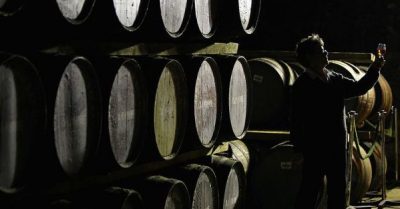Ah, whiskey, giver of life, mother of us all. It smells good; it looks good; you’d step over your own mother just to get some. (That’s two—two!—Simpsons references in two sentences. I’m, quite frankly, amazed at myself.)
Anyway, there’s a pretty in-depth and generally comprehensive history of Irish whiskey—from the source of the word “whiskey” itself and the beginnings of whiskey drinking on the Emerald Isle all the way to the laws governing whiskey production and distillation up to modern times—over at UPROXX.
It’s peppered with whiskey-related proverbs and maxims, which is just delightful, and it does a great job of explaining Irish whiskey vis-a-vis Scotch and American whiskey. It’s a pretty extensive read, but here’s just a small preview:
Today, Ireland produces 7 million cases of whiskey annually. Of that, 4.5 million is Jameson alone. By comparison, Scotland exports 99 million cases per year. That British embargo — that they had to lift because of Ireland’s ascension into the EU — still haunts Irish whiskey. They’ve yet to fully recover.
Over the course of the 19th and 20th century Irish whiskey standardized (along with the rest of the world’s spirits). Irish whiskey is now broken into four categories: Single Malt Irish Whiskey, Single Pot Whiskey, Grain Whiskey, and Blended Whiskey.
Single Malt is a malted barley distilled in a pot still. This is the closest to Scotch Single Malt, only that it’s almost always triple distilled in Ireland and only (again, usually) twice distilled in Scotland. The best bottles you’ll find are Connemara Peated Malt, Bushmills 10, 16, and 21 years, Locke’s Single Malt, and Tullamore D.E.W Single Malt 10 year.
Good stuff, right? Whether you’re a seasoned drinker of the brownest of the brown liquors (alright, alright, that’s bourbon. I just had to toss another Simpsons allusion in there. Sue me.) or a complete teetotaler, this history of Irish whiskey is absolutely worth thumbing through. (Or scrolling. You’re on the internet. Again, sue me.)
(h/t UPROXX)
